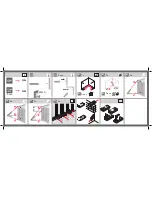
9
1.5. Design and operation
1.5.1.
Operation principle
1.5.1.1. The flow meter is designed on the base of a pulse-phase method of ul-
trasonic flow measurement. Its operation principle is based on measuring
the time difference between the time it takes for an ultrasonic signal
(USS) to travel through the liquid with the direction of flow and against it.
1.5.1.2. The peculiarity of this type of ultrasonic flow meter is alternating supply of
electrical probing pulses generated by the secondary converter (SMC) to
the converters PEA1 and PEA2 (Fig.2).
Fig.2. Diagram of the pipeline section with PEA installed
USS generated by one PEA is projected through the liquid flowing in the
pipe and is received by the other PEA. Because of liquid flow, a sound
wave is shifted, which in turn leads to the difference in upstream and
downstream times of USS travel: it takes less time for an ultrasonic signal
to travel in the flow direction (from PEA1 to PEA2) than that in the oppo-
site direction (from PEA2 to PEA1). The difference in upstream and
downstream time of USS travel through an acoustic path
dT
is propor-
tional to flow velocity of fluid v and, correspondingly, to volumetric flow
rate
Q
.
1.5.1.3. The flow rate value Q is calculated only if the following condition is fulfilled:
Q ≥ Q
min
,
where Q
min
– minimal value of the flow rate at which the measured flow
rate value in the flow meter is set to zero, the volume accumulation and
pulse output at the universal output stops.
The recommended value of low flow cutoff corresponds to the flow
meter's sensitivity threshold.
If Q > Q
max
condition (where Q
max
responds to the flow velocity value
of 5 m/s) condition is fulfilled, flow measurement continues, but volume
accumulation, archiving and pulse output at the universal output stops.










































